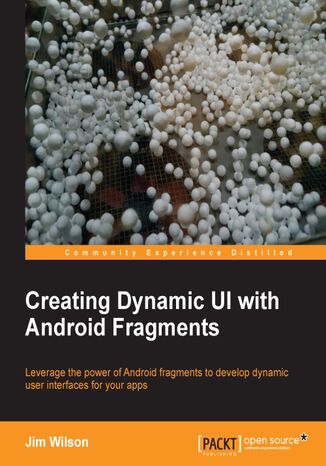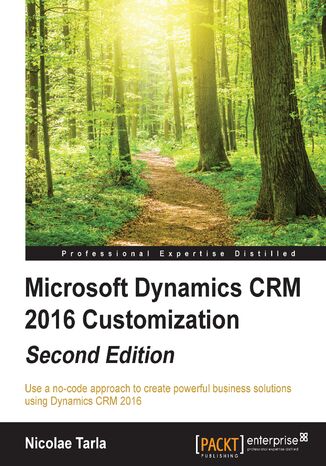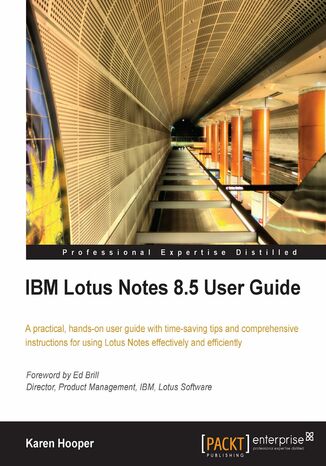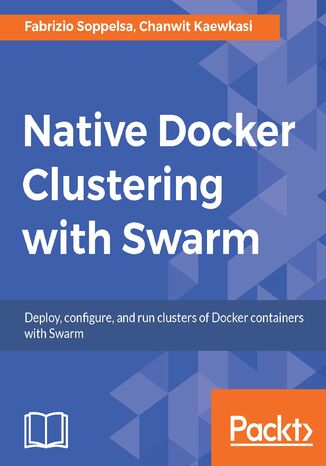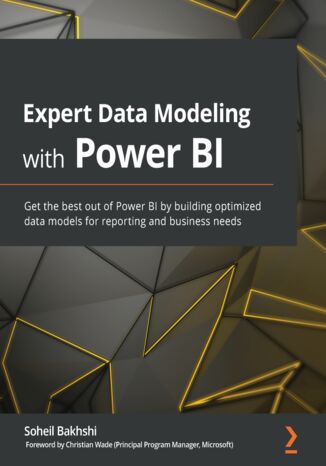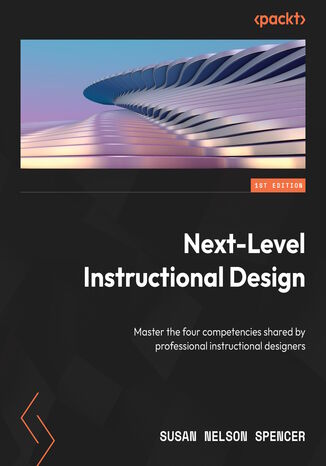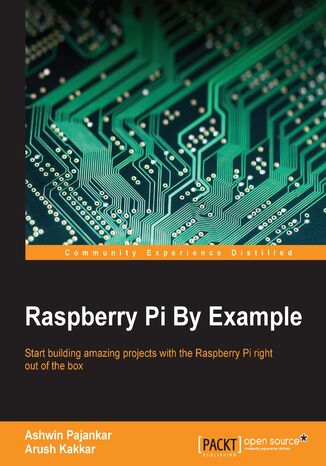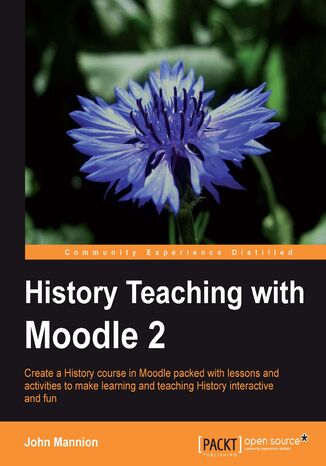Kategorien
-
- Bitcoin
- Geschäftsfrau
- Coaching
- Controlling
- E-Business
- Ökonomie
- Finanzen
- Börse und Investitionen
- Persönliche Kompetenzen
- Computer im Büro
- Kommunikation und Verhandlungen
- Kleines Unternehmen
- Marketing
- Motivation
- Multimedia-Training
- Immobilien
- Überzeugung und NLP
- Steuern
- Sozialpolitik
- Handbȕcher
- Präsentationen
- Führung
- Public Relation
- Berichte, Analysen
- Geheimnis
- Social Media
- Verkauf
- Start-up
- Ihre Karriere
- Management
- Projektmanagement
- Personal (HR)
-
- Architektura i wnętrza
- Sicherheit und Gesundheit am Arbeitsplatz
- Biznes i Ekonomia
- Haus und Garten
- E-Business
- Ekonomia i finanse
- Esoterik
- Finanzen
- Persönliche Finanzen
- Unternehmen
- Fotografie
- Informatik
- HR und Gehaltsabrechnung
- Frauen
- Computer, Excel
- Buchhaltung
- Kultur und Literatur
- Wissenschaftlich und akademisch
- Umweltschutz
- meinungsbildend
- Bildung
- Steuern
- Reisen
- Psychologie
- Religion
- Landwirtschaft
- Buch- und Pressemarkt
- Transport und Spedition
- Gesundheit und Schönheit
-
- Office-Programme
- Datenbank
- Bioinformatik
- IT Branche
- CAD/CAM
- Digital Lifestyle
- DTP
- Elektronik
- Digitale Fotografie
- Computergrafik
- Spiele
- Hacking
- Hardware
- IT w ekonomii
- Wissenschaftliche Pakete
- Schulbücher
- Computergrundlagen
- Programmierung
- Mobile-Programmierung
- Internet-Server
- Computernetzwerke
- Start-up
- Betriebssysteme
- Künstliche Inteligenz
- Technik für Kinder
- Webmaster
-
- Anthologien
- Ballade
- Biografien und Autobiografien
- Für Erwachsene
- Drama
- Tagebücher, Memoiren, Briefe
- Epos
- Essay
- Science Fiction
- Felietonys
- Fiktion
- Humor, Satire
- Andere
- Klassisch
- Krimi
- Sachbücher
- Belletristik
- Mity i legendy
- Nobelpreisträger
- Kurzgeschichten
- Gesellschaftlich
- Okultyzm i magia
- Erzählung
- Erinnerungen
- Reisen
- Gedicht
- Poesie
- Politik
- Populärwissenschaftlich
- Roman
- Historischer Roman
- Prosa
- Abenteuer
- Journalismus
- Reportage
- Romans i literatura obyczajowa
- Sensation
- Thriller, Horror
- Interviews und Erinnerungen
-
- Archäologie
- Bibliotekoznawstwo
- Filmwissenschaft
- Philologie
- Polnische Philologie
- Philosophie
- Finanse i bankowość
- Erdkunde
- Wirtschaft
- Handel. Weltwirtschaft
- Geschichte und Archäologie
- Kunst- und Architekturgeschichte
- Kulturwissenschaft
- Linguistik
- Literaturwissenschaft
- Logistik
- Mathematik
- Medizin
- Geisteswissenschaften
- Pädagogik
- Lehrmittel
- Populärwissenschaftlich
- Andere
- Psychologie
- Soziologie
- Theatrologie
- Teologie
- Theorien und Wirtschaftswissenschaften
- Transport i spedycja
- Sportunterricht
- Zarządzanie i marketing
-
- Sicherheit und Gesundheit am Arbeitsplatz
- Geschichte
- Verkehrsregeln. Führerschein
- Rechtswissenschaften
- Gesundheitswesen
- Allgemeines. Wissenskompendium
- akademische Bücher
- Andere
- Bau- und Wohnungsrecht
- Zivilrecht
- Finanzrecht
- Wirtschaftsrecht
- Wirtschafts- und Handelsrecht
- Strafrecht
- Strafrecht. Kriminelle Taten. Kriminologie
- Internationales Recht
- Internationales und ausländisches Recht
- Gesundheitsschutzgesetz
- Bildungsrecht
- Steuerrecht
- Arbeits- und Sozialversicherungsrecht
- Öffentliches, Verfassungs- und Verwaltungsrecht
- Familien- und Vormundschaftsrecht
- Agrarrecht
- Sozialrecht, Arbeitsrecht
- EU-Recht
- Industrie
- Agrar- und Umweltschutz
- Wörterbücher und Enzyklopädien
- Öffentliche Auftragsvergabe
- Management
-
- Afrika
- Alben
- Südamerika
- Mittel- und Nordamerika
- Australien, Neuseeland, Ozeanien
- Österreich
- Asien
- Balkan
- Naher Osten
- Bulgarien
- China
- Kroatien
- Tschechische Republik
- Dänemark
- Ägypten
- Estland
- Europa
- Frankreich
- Berge
- Griechenland
- Spanien
- Niederlande
- Island
- Litauen
- Lettland
- Mapy, Plany miast, Atlasy
- Miniführer
- Deutschland
- Norwegen
- Aktive Reisen
- Polen
- Portugal
- Andere
- Przewodniki po hotelach i restauracjach
- Russland
- Rumänien
- Slowakei
- Slowenien
- Schweiz
- Schweden
- Welt
- Türkei
- Ukraine
- Ungarn
- Großbritannien
- Italien
-
- Lebensphilosophien
- Kompetencje psychospołeczne
- zwischenmenschliche Kommunikation
- Mindfulness
- Allgemeines
- Überzeugung und NLP
- Akademische Psychologie
- Psychologie von Seele und Geist
- Arbeitspsychologie
- Relacje i związki
- Elternschafts- und Kinderpsychologie
- Problemlösung
- Intellektuelle Entwicklung
- Geheimnis
- Sexualität
- Verführung
- Aussehen ind Image
- Lebensphilosophien
-
- Bitcoin
- Geschäftsfrau
- Coaching
- Controlling
- E-Business
- Ökonomie
- Finanzen
- Börse und Investitionen
- Persönliche Kompetenzen
- Kommunikation und Verhandlungen
- Kleines Unternehmen
- Marketing
- Motivation
- Immobilien
- Überzeugung und NLP
- Steuern
- Sozialpolitik
- Handbȕcher
- Präsentationen
- Führung
- Public Relation
- Geheimnis
- Social Media
- Verkauf
- Start-up
- Ihre Karriere
- Management
- Projektmanagement
- Personal (HR)
-
- Anthologien
- Ballade
- Biografien und Autobiografien
- Für Erwachsene
- Drama
- Tagebücher, Memoiren, Briefe
- Epos
- Essay
- Science Fiction
- Felietonys
- Fiktion
- Humor, Satire
- Andere
- Klassisch
- Krimi
- Sachbücher
- Belletristik
- Mity i legendy
- Nobelpreisträger
- Kurzgeschichten
- Gesellschaftlich
- Okultyzm i magia
- Erzählung
- Erinnerungen
- Reisen
- Poesie
- Politik
- Populärwissenschaftlich
- Roman
- Historischer Roman
- Prosa
- Abenteuer
- Journalismus
- Reportage
- Romans i literatura obyczajowa
- Sensation
- Thriller, Horror
- Interviews und Erinnerungen
-
- Archäologie
- Philosophie
- Wirtschaft
- Handel. Weltwirtschaft
- Geschichte und Archäologie
- Kunst- und Architekturgeschichte
- Kulturwissenschaft
- Literaturwissenschaft
- Mathematik
- Medizin
- Geisteswissenschaften
- Pädagogik
- Lehrmittel
- Populärwissenschaftlich
- Andere
- Psychologie
- Soziologie
- Teologie
- Zarządzanie i marketing
-
- Lebensphilosophien
- zwischenmenschliche Kommunikation
- Mindfulness
- Allgemeines
- Überzeugung und NLP
- Akademische Psychologie
- Psychologie von Seele und Geist
- Arbeitspsychologie
- Relacje i związki
- Elternschafts- und Kinderpsychologie
- Problemlösung
- Intellektuelle Entwicklung
- Geheimnis
- Sexualität
- Verführung
- Aussehen ind Image
- Lebensphilosophien
To create a dynamic and multi-pane user interface on Android, you need to encapsulate UI components and activity behaviors into modules that you can swap into and out of your activities. You can create these modules with the fragment class, which behaves somewhat like a nested activity that can define its own layout and manage its own lifecycle. When a fragment specifies its own layout, it can be configured in different combinations with other fragments inside an activity to modify your layout configuration for different screen sizes (a small screen might show one fragment at a time, but a large screen can show two or more).Creating Dynamic UI with Android Fragments shows you how to create modern Android applications that meet the high expectations of today's users. You will learn how to incorporate rich navigation features like swipe-based screen browsing and how to create adaptive UIs that ensure your application looks fantastic whether run on a low cost smartphone or the latest tablet.This book looks at the impact fragments have on Android UI design and their role in both simplifying many common UI challenges and providing new ways to incorporate rich UI behaviors.You will learn how to use fragments to create UIs that automatically adapt to device differences. We look closely at the roll of fragment transactions and how to work with the Android back stack. Leveraging this understanding, we then explore several specialized fragment-related classes like ListFragment and DialogFragment as well as rich navigation features like swipe-based screen browsing.
Microsoft Dynamics CRM is a Microsoft solution to satisfy the various needs of customer relationship management and is already equipped to be flexible to meet the needs of businesses. With Microsoft Dynamics CRM 2016, many new features were added for social, marketing, sales, and integration with other tools. These features add many dimensions to customization. This book will not only showcase how CRM can be customized, but will also be your guide on how the latest advancements in Dynamics CRM 2016 can be used to benefit your business. You will learn how to enhance the functionality of Microsoft Dynamics CRM 2016 and use it to serve different businesses of various scales. You will see how to get ready to customize CRM and then quickly move on to grasp the CRM app structure, which will help you customize Dynamics CRM better. You will find out how to customize CRM for sales, service, marketing, and social. We’ll also show you how CRM 2016 can be seamlessly embedded into various productivity tools, and how to customize CRM for machine learning and contextual guidance. Finally, we’ll also cover the latest advancements in CRM’s mobile capabilities and its complete offline support so you can better customize it.
IBM Lotus Notes is an integrated desktop client option providing security-rich e-mail and calendar capabilities with a powerful platform for collaborative business applications. Lotus Notes enables you to take your business communications to a new level efficiently, quickly and productively. Many of us use Lotus Notes in our work on a daily basis and being able to use it more efficiently and smartly will benefit our hectic work lives. This exciting user guide enables business users to master all these aspects simply and effectively.This book provides comprehensive coverage of Lotus Notes in its entirety. It is easy to follow the instructions as they come with clear explanations and screenshots. This book will introduce the important features of Lotus Notes and at the same time give business users a deeper and clearer understanding of basic functionality, providing the answers to many questions that are encountered while sending mails, using calendars, and working with Lotus Notes applications.This practical, hands-on user guide shows you how to master all of the new features of Lotus Notes 8.5. This book begins by exploring the client interface of Lotus Notes including the Open List, the Home Page, the Side Bar, as well as many other options. You will see how Sametime facilitates instant communication, and how to get the most out of it. Widgets— small applications that you can install in the Lotus Notes side bar— such as LinkedIn, Google Maps, World clocks, Wikipedia search, and more are discussed at length, enabling you to access valuable information and also customize the widgets quickly.Messaging is covered in detail, with many time saving features explored. You will learn how to manage your Contacts, and even offer access to others as required. Moving ahead, you will see how calendars can be used to manage time effectively, especially with meetings. Next you will explore Notes applications, and how to work remotely with Lotus Notes. Finally, we introduce Symphony, which is an office suite that is included in Lotus Notes. By following the practical, real-world examples, you will successfully master Lotus Notes and be able to get the most out of this diverse application.
Native Docker Clustering with Swarm. Create and manage clusters of any size
Fabrizio Soppelsa, Chanwit Kaewkasi
Docker Swarm serves as one of the crucial components of the Docker ecosystem and offers a native solution for you to orchestrate containers. It’s turning out to be one of the preferred choices for Docker clustering thanks to its recent improvements. This book covers Swarm, Swarm Mode, and SwarmKit. It gives you a guided tour on how Swarm works and how to work with Swarm. It describes how to set up local test installations and then moves to huge distributed infrastructures. You will be shown how Swarm works internally, what’s new in Swarmkit, how to automate big Swarm deployments, and how to configure and operate a Swarm cluster on the public and private cloud. This book will teach you how to meet the challenge of deploying massive production-ready applications and a huge number of containers on Swarm. You'll also cover advanced topics that include volumes, scheduling, a Libnetwork deep dive, security, and platform scalability.
Soheil Bakhshi, Christian Wade
This book is a comprehensive guide to understanding the ins and outs of data modeling and how to create data models using Power BI confidently.You'll learn how to connect data from multiple sources, understand data, define and manage relationships between data, and shape data models to gain deep and detailed insights about your organization.In this book, you'll explore how to use data modeling and navigation techniques to define relationships and create a data model before defining new metrics and performing custom calculations using modeling features. As you advance through the chapters, the book will demonstrate how to create full-fledged data models, enabling you to create efficient data models and simpler DAX code with new data modeling features. With the help of examples, you'll discover how you can solve business challenges by building optimal data models and changing your existing data models to meet evolving business requirements. Finally, you'll learn how to use some new and advanced modeling features to enhance your data models to carry out a wide variety of complex tasks.By the end of this Power BI book, you'll have gained the skills you need to structure data coming from multiple sources in different ways to create optimized data models that support reporting and data analytics.
The field of instructional design offers a rapidly growing, flexible, and rewarding career path. Chances are that if you’re a teacher creating training material, college professor designing educational courses, human resources professional creating learning content, or even a graphic designer curating content, you may already be engaging in instructional designing without even realizing it!This book teaches you all about the four capabilities that are most important to exceling as an instructional designer—teaching, writing, creating, and analyzing. The chapters are designed in a way that provides you with practical tips for day-to-day learning projects through true ID stories. You’ll get familiar with common misconceptions surrounding the field, along with how to overcome your shortcomings. With the help of easy-to-understand real-world case studies and practical tips, each chapter focuses on developing one particular competency to help you grasp the concepts with ease.By the end of this book, you’ll have gained a comprehensive understanding of the key competencies needed to succeed in this field and their importance, and learned how to develop them effectively.
Raspberry Pi By Example. Start building amazing projects with the Raspberry Pi right out of the box
Chidananda Matada Shivan, Ashwin Pajankar, William Harrington, Bartek Zdanowski, ...
Want to put your Raspberry Pi through its paces right out of the box? This tutorial guide is designed to get you learning all the tricks of the Raspberry Pi through building complete, hands-on hardware projects. Speed through the basics and then dive right in to development!Discover that you can do almost anything with your Raspberry Pi with a taste of almost everything. Get started with Pi Gaming as you learn how to set up Minecraft, and then program your own game with the help of Pygame. Turn the Pi into your own home security system with complete guidance on setting up a webcam spy camera and OpenCV computer vision for image recognition capabilities. Get to grips with GPIO programming to make a Pi-based glowing LED system, build a complete functioning motion tracker, and more. Finally, get ready to tackle projects that push your Pi to its limits. Construct a complete Internet of Things home automation system with the Raspberry Pi to control your house via Twitter; turn your Pi into a super-computer through linking multiple boards into a cluster and then add in advanced network capabilities for super speedy processing!
Moodle is an open source virtual learning environment that is coming to be used in more and more schools worldwide. History and Moodle complement each other perfectly in terms of content and delivery. This book will show you how to set up tasks and activities that will enable your students to forge a greater understanding of complex issues, bringing History into the 21st century.History Teaching with Moodle 2 presents new and exciting ideas for the delivery of History content making use of tried-and-trusted methods of teaching the subject. By following a sample course, you will find it easy to transform your existing lesson plans into a Moodle course that will become even more efficient, attractive, and useful over time. Make the past come to life using a range of tasks and activities that can consolidate learning for some, enhance understanding for others, and enthuse all. Learn how to add an RSS feed to your home page to display daily 'On this day in history' posts. Create a one-minute quiz about how the Second World War began. Post video footage of a trip to a castle and set some questions for students in anticipation of their next visit. Set up a wiki so that student groups can create their own story about 'murder at a monastery'. Moodle's built-in features allow students to get a better grasp of historical concepts and will rejuvenate their interest in the subject.

